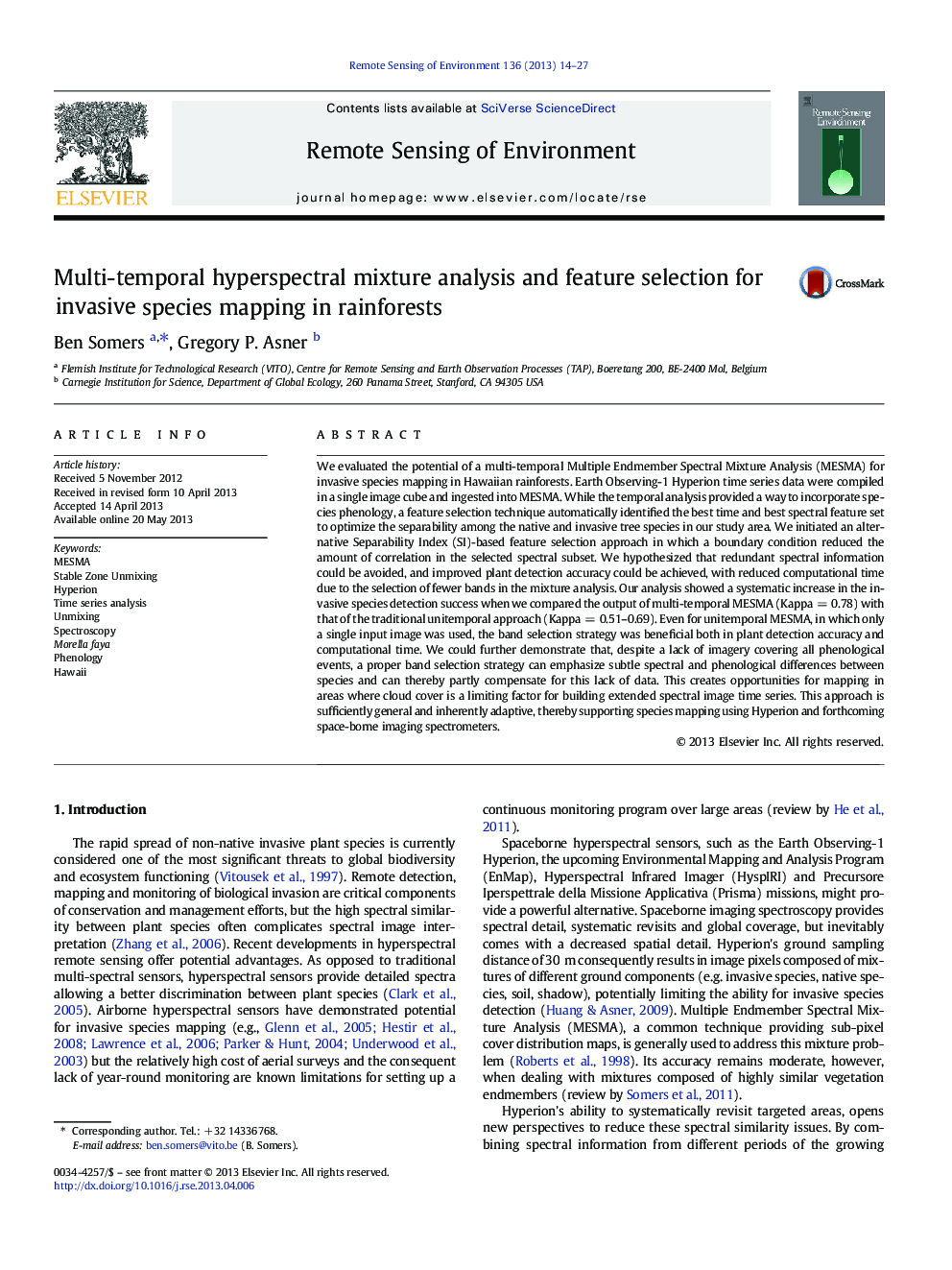| کد مقاله | کد نشریه | سال انتشار | مقاله انگلیسی | نسخه تمام متن |
|---|---|---|---|---|
| 6347378 | 1621264 | 2013 | 14 صفحه PDF | دانلود رایگان |

- We used a time series of Hyperion to detect invasive species in Hawaiian forests.
- We ingested the time series into MESMA improving detection success.
- Band selection was needed to optimize CPU efficiency and detection success.
- We proposed an automated technique forcing the selection of uncorrelated bands.
- The selected bands optimized the separability between the targeted tree species.
We evaluated the potential of a multi-temporal Multiple Endmember Spectral Mixture Analysis (MESMA) for invasive species mapping in Hawaiian rainforests. Earth Observing-1 Hyperion time series data were compiled in a single image cube and ingested into MESMA. While the temporal analysis provided a way to incorporate species phenology, a feature selection technique automatically identified the best time and best spectral feature set to optimize the separability among the native and invasive tree species in our study area. We initiated an alternative Separability Index (SI)-based feature selection approach in which a boundary condition reduced the amount of correlation in the selected spectral subset. We hypothesized that redundant spectral information could be avoided, and improved plant detection accuracy could be achieved, with reduced computational time due to the selection of fewer bands in the mixture analysis. Our analysis showed a systematic increase in the invasive species detection success when we compared the output of multi-temporal MESMA (Kappa = 0.78) with that of the traditional unitemporal approach (Kappa = 0.51-0.69). Even for unitemporal MESMA, in which only a single input image was used, the band selection strategy was beneficial both in plant detection accuracy and computational time. We could further demonstrate that, despite a lack of imagery covering all phenological events, a proper band selection strategy can emphasize subtle spectral and phenological differences between species and can thereby partly compensate for this lack of data. This creates opportunities for mapping in areas where cloud cover is a limiting factor for building extended spectral image time series. This approach is sufficiently general and inherently adaptive, thereby supporting species mapping using Hyperion and forthcoming space-borne imaging spectrometers.
Journal: Remote Sensing of Environment - Volume 136, September 2013, Pages 14-27